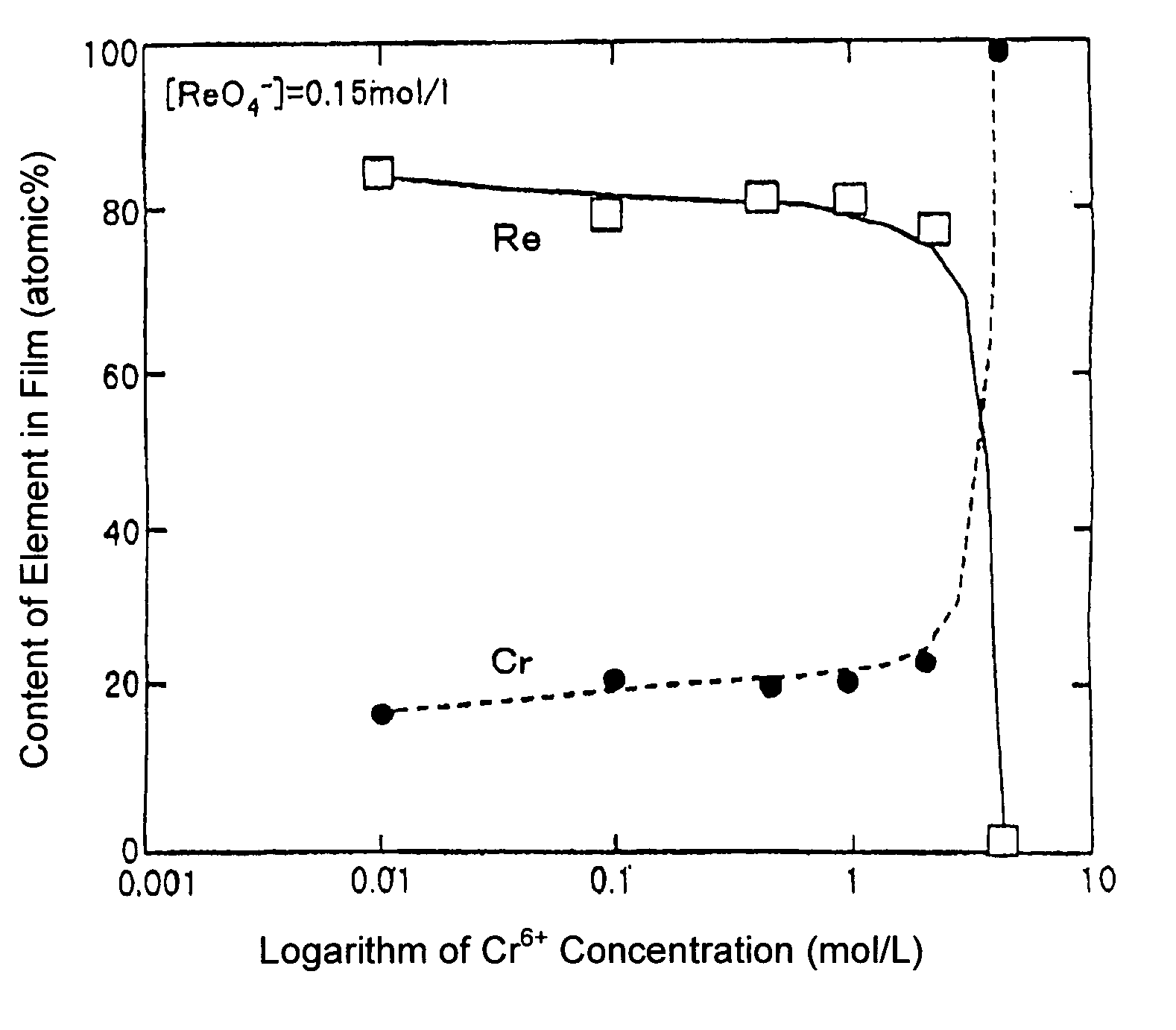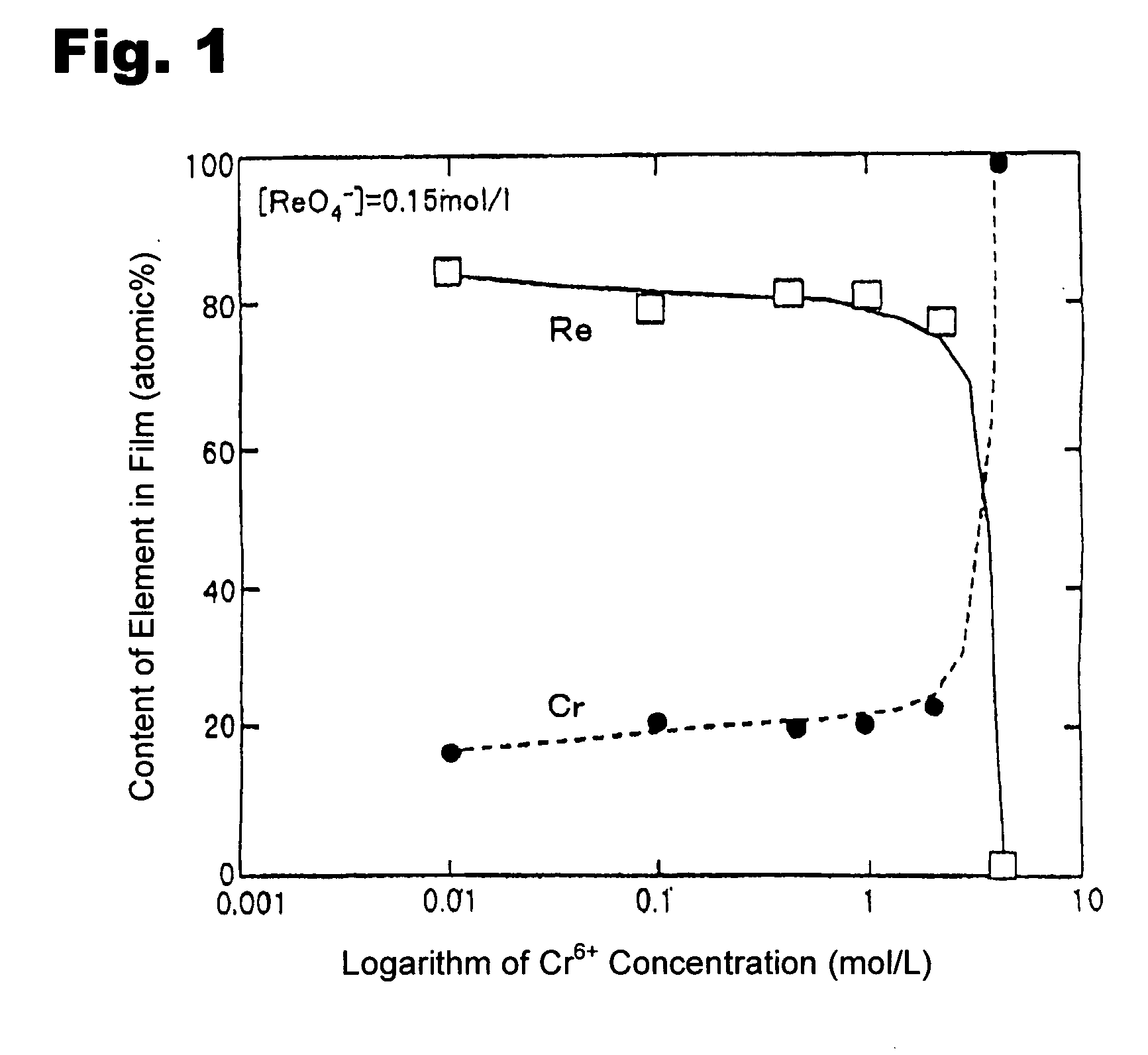Method for forming Re-Cr alloy film through electroplating process using bath containing Cr(VI)
a technology of re-cr alloy and electroplating process, which is applied in the field of forming a re-cr alloy, can solve the problems of large-scale apparatus and complicated operations, large number of defects or cracks in the obtained film, and many restrictions on the size and shape of the substrate, so as to improve the plating efficiency and reduce the occurrence of defects
- Summary
- Abstract
- Description
- Claims
- Application Information
AI Technical Summary
Benefits of technology
Problems solved by technology
Method used
Image
Examples
##ventive example 1
INVENTIVE EXAMPLE 1
[0019] A copper plate was subjected to degreasing / cleaning, and used as a substrate. A solution was prepared using chromic anhydride to have a Cr6+ ion in a concentration of 0.01 mol / L In addition to the Cr6+ ion, 0.15 mol / L of ReO4−, 0.01 mol / L of chromium chloride, and 0.01 mol / L of sulfuric acid were added to the solution to prepare a plating bath. The pH of the plating bath was adjusted at 0 (zero). Then, an electroplating process was performed for 1 hour under a plating bath temperature of 50° C. and a current density of 100 mA / cm2.
##ventive example 2
INVENTIVE EXAMPLE 2
[0020] Except that the concentration of the Cr6+ was set at 0.1 mol / L, an electroplating process was performed under the same conditions as those in Inventive Example 1.
##ventive example 3
INVENTIVE EXAMPLE 3
[0021] Except that the concentration of the Cr6+ was set at 0.5 mol / L, an electroplating process was performed under the same conditions as those in Inventive Example 1.
PUM
| Property | Measurement | Unit |
|---|---|---|
| temperature | aaaaa | aaaaa |
| pH | aaaaa | aaaaa |
| temperature | aaaaa | aaaaa |
Abstract
Description
Claims
Application Information
 Login to View More
Login to View More - R&D
- Intellectual Property
- Life Sciences
- Materials
- Tech Scout
- Unparalleled Data Quality
- Higher Quality Content
- 60% Fewer Hallucinations
Browse by: Latest US Patents, China's latest patents, Technical Efficacy Thesaurus, Application Domain, Technology Topic, Popular Technical Reports.
© 2025 PatSnap. All rights reserved.Legal|Privacy policy|Modern Slavery Act Transparency Statement|Sitemap|About US| Contact US: help@patsnap.com


